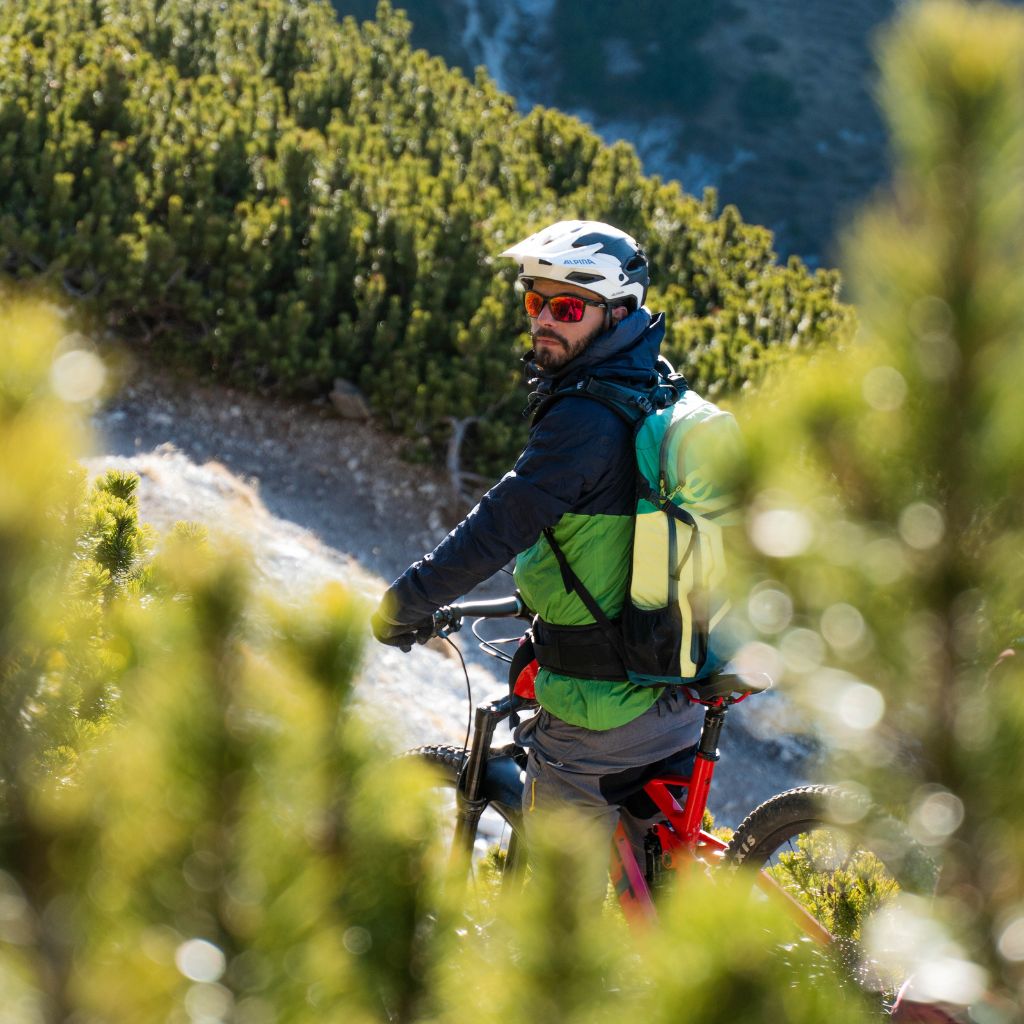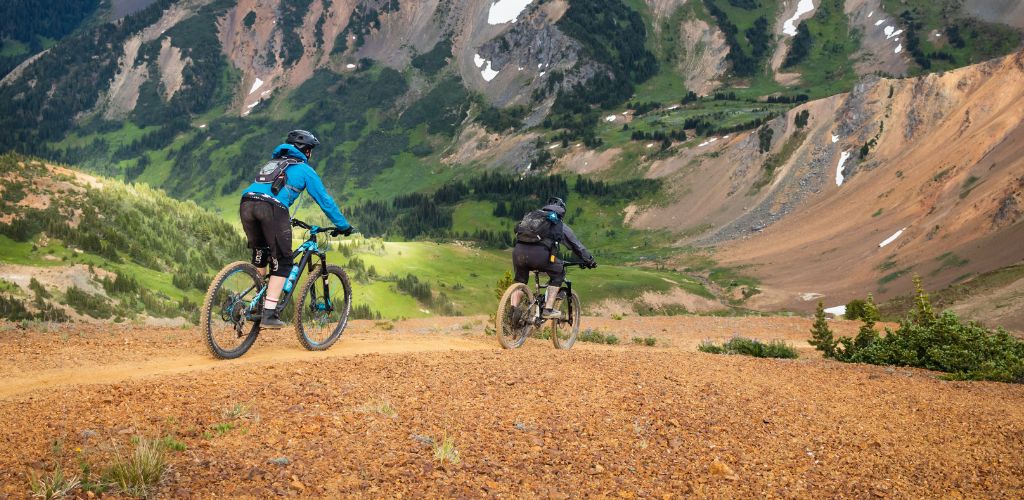Mountain biking is an exhilarating and rewarding sport that combines physical fitness, outdoor adventure, and technical skill.
For beginners, it’s important to understand that having the right equipment not only enhances the experience but also ensures safety and comfort.
If you’re new to mountain biking and wondering what gear you need to get started, this comprehensive guide will walk you through the essential mountain biking equipment for beginners.
The Mountain Bike: Your Primary Equipment
Types of Mountain Bikes
There are several types of mountain bikes, including cross-country, trail, enduro, and downhill. As a beginner, a cross-country or trail bike is generally regarded as the best choice. These bikes offer a good balance of efficiency, stability, and comfort.
Cross-country bikes are designed for speed and efficiency on relatively smooth trails, featuring lightweight frames and fast-rolling tires. Trail bikes, on the other hand, are the most versatile, suitable for a wide range of terrain with a balance of climbing efficiency and descending prowess.
Personally, I recommend a trail bike to my friends when they start riding, as it makes for a more enjoyable descent, especially on rough terrain, at the sacrifice of just a little ease of climbing.
Key Features to Look For
Look for a bike with a durable frame, reliable suspension (full or hardtail), and appropriate wheel size (27.5″ or 29″). Ensure the bike fits you well – it affects handling and comfort.
When considering frame materials, you’ll find options like aluminum (affordable and durable), carbon fiber (lightweight and stiff but more expensive), and steel (robust and offers a smooth ride).
The bike’s suspension system, either a hardtail (front suspension only) or full suspension (both front and rear), significantly impacts ride quality and price.
It’s also important to understand bike sizing and geometry. A bike that fits well improves handling, comfort, and overall riding experience. Beginners should seek advice from experienced riders or professionals at bike shops for proper fitting.
Budgeting
Prices vary significantly. For beginners, expect to spend over $1000 for a decent quality bike. Remember, you get what you pay for in terms of durability and ride quality.
Safety Gear: Protecting Yourself
Helmet
A must-have item. Look for a mountain biking-specific helmet that offers more coverage and protection than a standard road bike helmet. Within the mountain biking helmet range, there are also a whole raft of different types ranging from dirt jump helmets, to cross country style mtb helmets, to enduro/trail riding helmets, through to downhill fullface helmets.
For my friends, I’d usually recommend a enduro/trail riding style helmet, which has great coverage around the head, including the back of the head, decent ventilation, and often will feature MIPS (which is designed to mitigate rotational forces during a crash). You can also get convertible helmets such as the Bell Super 3R, which feature a removable chin bar – converting the trail helmet into a lightweight fullface. It’s not as protective as a real full face helmet, but definitely provides more protection than an open helmet for those gnarlier trail rides.
Gloves
Full-finger gloves protect your hands from scrapes and improve grip.
Eye Protection
Glasses or goggles to shield your eyes from dirt, branches, bugs, and sunlight.
Pads and Armor
Depending on your riding style and comfort level, consider elbow and knee pads, especially if you’re riding more technical trails. Most experienced mountain bikers own at least a set of knee pads for rides where the speeds and/or trail difficulty are going to be high. Combined with gloves, and a helmet, this gives you a decent amount of protection from common contact points with the ground!

Clothing: Comfort and Functionality
Jerseys and Shorts
Specific mountain biking jerseys and shorts are designed for comfort and durability. They often feature moisture-wicking materials and a looser fit.
Shoes
Mountain biking shoes offer better grip and power transfer. Flat pedal shoes or clipless pedal systems are the main choices, depending on your pedal type.
When it comes to shoes, the choice between flat pedal shoes and clipless shoes depends on your riding style. Flat pedal shoes have sticky rubber soles for grip, while clipless shoes, used with clipless pedals, offer better control and efficiency but require practice to use safely.
Weather-Appropriate Gear
Be prepared with waterproof jackets or extra layers for colder conditions.
Hydration and Nutrition: Staying Energized
Hydration Packs or Bottles
Hydration is key. Use a hydration pack for longer rides or a water bottle in a cage for shorter outings. Hydration strategies vary depending on the ride length and weather conditions. Electrolyte drinks can be beneficial on longer rides to replenish salts lost through sweat.
Nutrition
For longer rides, carry energy bars, gels, or snacks to maintain energy levels. Nutrition-wise, it’s important to eat small, regular amounts of energy-rich food to maintain stamina. Experiment with different types of food to see what suits you best.
Navigation and Communication Tools
GPS Device or Smartphone with a Trail App
Helps in navigating trails and tracking your ride. In addition to GPS devices, consider apps that offer offline maps for areas with poor cellular reception. Learning basic map reading and navigation skills is also beneficial.
Basic Communication Tools
A phone for emergencies, plus letting someone know your planned route and return time is always a good practice. Always carry an ID, emergency contact information, and inform someone about your route and expected return time.
Basic Repair Kit: Be Prepared for Breakdowns
Spare Tube or Tire Patch Kit
Essential for fixing flat tires. Don’t forget a tire lever or two!
Understanding basic bike maintenance is crucial. Learn how to change a tire, fix a broken chain, and adjust your brakes and gears. Regularly check your bike before rides to minimize the chances of breakdowns.
Mini Pump or CO2 Inflator
To inflate tires after a repair or adjust tire pressure.
Multi-Tool
For basic adjustments and repairs a multi-tool is a life saver. They have a large number of allen key sizes, with a variety of other screwdrivers, blades, chain tools etc on them.
Chain Link and Basic Chain Tool
In case of a chain break.
Accessories: Enhancing the Riding Experience
Bike Lights
For visibility in low-light conditions. (Or take super bright mountain biking night riding lights for some rides once the sun has set!)
Bike Computer or Speedometer
To track your speed and distance.
Backpack
To carry essentials like tools, water, snacks, and a first-aid kit.
Joining a Community: Learning and Enjoyment
Local Riding Groups
Joining a local group can provide valuable tips, route recommendations, and the camaraderie of fellow riders.
Online Forums and Resources
Great for advice, bike maintenance tips, and connecting with the broader mountain biking community.
Conclusion
Mountain biking for beginners is an adventure that requires the right equipment for both enjoyment and safety. Starting with a good bike, protective gear, appropriate clothing, and the necessary tools, you can confidently hit the trails.
Remember, as your skills and interest in mountain biking grow, so too will your collection of gear and equipment. This is perhaps a serious understatement 😀
Welcome to the world of mountain biking – embrace the challenges and enjoy the ride! Remember, mountain biking is a journey – there’s always something new to learn and explore.

